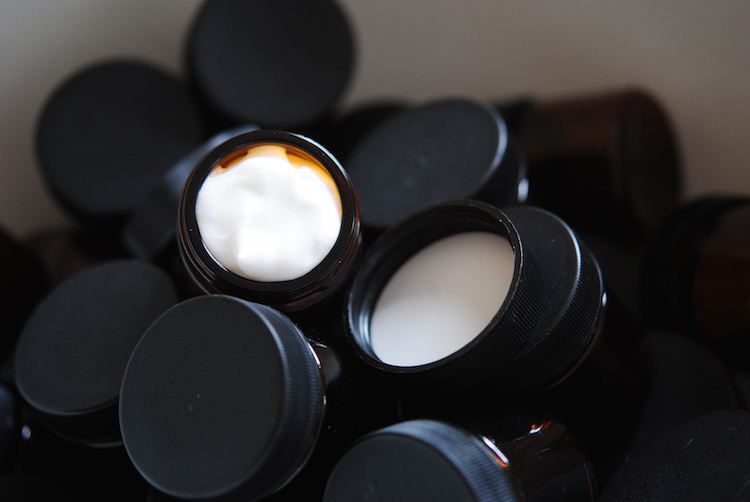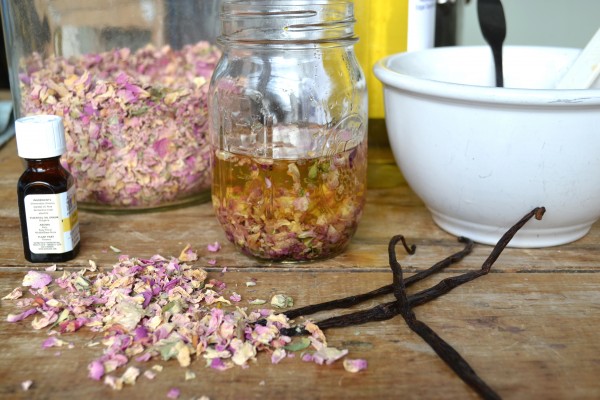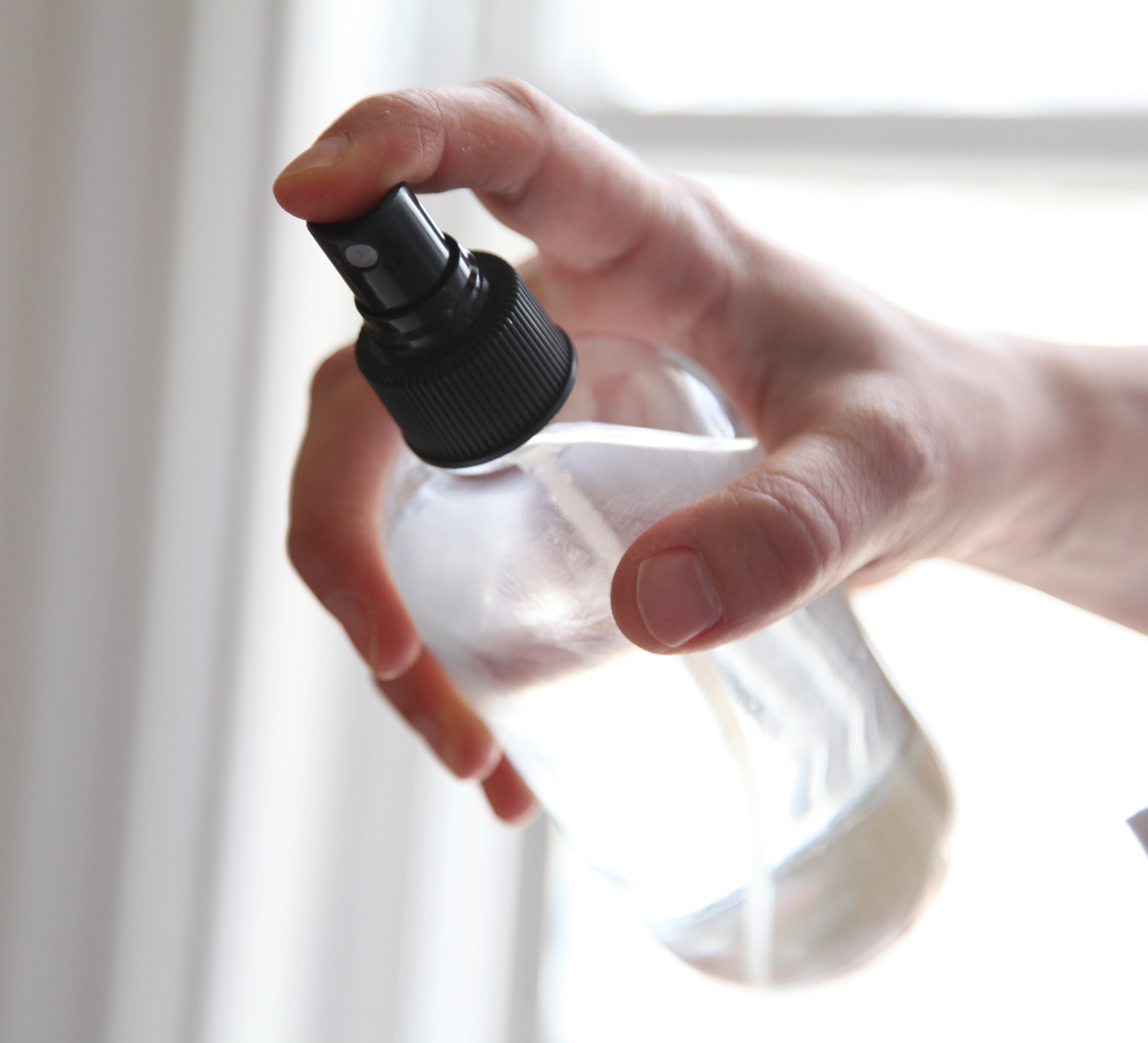
Incorporating Essential Oils into your Herbal Practice
This post is the fourth in a weekly, multi-part series on using essential oils. We started by discussing Basic Essential Oils for Daily Living, How to Choose High Quality Essential Oils, and Essential Oil Safety, and continue here with a discussion on using essential oils in herbal practice. What are the safety considerations? Can essential oils be used internally? What are ways for the herbalist to use essential oils in herbal healing? We invite you to learn here how herbalists use essential oils and then join us weekly for additional articles on topics ranging from choosing carrier oils to essential oil sustainability considerations.
Essential Oils can be used Safely in your Herbal Practice
When reading books and articles about essential oils, bold, cautionary language is ever-present reminding the reader that one must always remember safety. However, as herbalists we understand that this always the case with any substance within our practice, as we approach our craft with awareness, education, research and stout fact-checking. Much of the caution presented in regards to essential oils is based off the concept that, once extracted, their concentrated potency is highly active and reactive (Bowles, 2003; Lis-Balchin, 1995).
However, many respected chemists and licensed health care providers who specialize in the use of essential oils continue to remind us that there are very few reported cases of significant adverse reactions, poisonings, or fatalities caused by proper administration and use of essential oils (Bowles, 2003; Guba, 1998; Peixoto et al., 2009, Schnaubelt, 2011; Tisserand, 2013). It has been argued that most adverse reactions to essential oils are usually caused by adulterated oils, and not pure, high-quality essential oils (Buckle, 2003; Tisserand, 2013). In addition, severe adverse reactions seem to only have been reported in accidental ingestion or application of incredibly large quantities of essential oils rather than during proper administration and use (Guba, 1998; Buckle, 2003; Price and Price, 2002; Tisserand, 2013).

The Internal Use and Oral Administration Debate
…Essential oils are very powerful, concentrated, plant extracts that have not only a preventative role of maintaining well-being but a major role in already physically manifested disease and on this level leaving them out of a herbalist’s toolbox is like leaving the blue paint out of a painters palette.
– Cathy Skipper, Aromatic Medicine, Integrating Essential Oils into Herbal Practice.
Most essential oils are extracted from plants through steam distillation, enfleurage, or by using chemical solvents (Price and Price, 2002). As mentioned above, these oils are concentrated substances and as such there is an ongoing debate as to whether or not they are safe to use internally. It is important to note that internal use and oral administration are not synonymous concepts, the later generally referring to ingestion of essential oils via the digestive system (Buckle, 2003). Internal use, in most literature, is meant when essential oils are not intended to be swallowed, but rather applied to ‘internal tissues’ as they would be applied to external tissues. A few examples of this type of use would be in cases of mouthwash, throat sprays, suppositories, or pessaries. However, just because the essential oil is not being swallowed does not mean that it is not being absorbed (this is especially the case with rectal or vaginal routes) or that one is free and clear from causing irritation, chemical burns, or sensitivity reactions (Bowles, 2003, Buckle, 2003).
The internal and oral use debate in aromatherapy is fueled by various factors including geography and standards of education, professional licensing, potential for interaction with conventional medications, fear of poisoning, and a complicated history of pharmacological research and toxicity testing and the interpretation of such data in regards to safety and efficacy (Buckle, 2003; Guba, 1998; Tisserand, 2007; Tisserand, 2013). As an herbalist this might sound familiar to you, for as a profession we are constantly involved in a similar debate, especially in regards to pharmacological research into isolated constituents performed in vitro or on animals which can lack applicability to whole-plant pharmacokinetics and pharmacodynamics in a live, human system (Tisserand, 2007; Tisserand, 2013). In conclusion, it is important to know that there are herbalists and health care providers outside of the United States that are employing the oral administration of essential oils with profound and beneficial results (de Bonneval and Skipper, 2013).

Ways to Incorporate Essential Oils into your Herbal Practice
Even without oral administration, essential oils can be incredibly useful in herbal practice. For example, it is not uncommon to come across clients who may benefit from local or topical use of medicinal plants and their extracts. In this regard, there are a variety of ways to incorporate essential oils into herbal practice beyond ambient diffusion for managing stress, improving concentration, elevating mood, or countering fatigue. Below is a list with some suggestions of how to think outside the box and a starting place for further education about the use of essential oils in your herbal practice. As in all cases, never underestimate the need for research and careful study before trying anything new.

Steam Inhalation
One of the most common ways for essential oils to be administered for the benefit of our clients is the use of simple inhalation in the form of facial steams. Facial steams can be a useful adjunct approach to skincare, especially in cases of acne and some forms of rosacea. In addition, I have also employed steam inhalation in support of both the upper and lower respiratory system in cases of sinusitis, chronic rhinitis, and bronchitis. This latter application may be considered ‘internal use’ by some authors and practitioners.

Skin preparations
Incorporating essential oils into lotions and creams designed for troubled skin can be very supportive and soothing in cases of acne, rosacea, psoriasis, and eczema. Desired relief can also be found from adding essential oils (in carrier oil) to general or localized baths and rinses. They can also be used in spray or misting applications, such as facial toners. Another approach to consider is adding essential oils to shampoos and/or conditioning treatments, especially in cases of dandruff, cradle cap and other forms of dermatitis on the scalp, or tinea capitis.
Ointments and salves
Essential oils can also be incredibly useful when added to ointments or salves for their counter-irritant effects and the external relief from the pain and inflammation of arthritic joints. Very powerful relief can be elicited when essential oils are added to ointments made using herbal infused oils such as arnica, St. John’s wort, or ginger and cayenne. For a thorough review of different types of external preparations for joint conditions and their appropriate, check out our article on External Preparations for Joint Conditions in the Herbarium.

Self-Massage
Self-massage is a method of self-care that can be a supportive adjunct to an herbal medicine regimen especially in cases of lymphatic stagnation, poor circulation (when appropriate), breast health, gastro-intestinal upset, and/or poor body-image. Incorporating essential oils with different systemic affinities and energetics into self-massage can be incredibly beneficial and rewarding. Herb infused massage oils are easy to make and are ideal carriers for essential oils.

Dental hygiene and throat sprays
This may also be considered ‘internal use’ by some practitioners. However, many common dental products that are available to the general public contain essential oils. Mouthwashes and rinses, tooth powder, and throat spray (for example in cases of tonsillitis or sore throat) can all be made with essential oils. However, in this type of internal use, it must be made clear that these preparations are not to be swallowed.
Vaginal pessaries
For those of you who make your own from coconut butter and infused oils like calendula, vaginal pessaries can be very soothing and supportive during recovery from chronic vaginal dysbiosis, as in vaginal yeast infections or bacterial vaginosis, genital herpes lesions, or in cases where there is atrophy of the mucous membranes for example with lichen sclerosus or during the menopause. It is important to remember that the vaginal tissues and floral balance are very sensitive, and specific caution must be used in choosing which essential oils to use and how much to incorporate into your recipe. Again, many authors and practitioners will consider this internal use.
Final Remarks
As with herbs, the key to incorporating essential oils into your practice lies within the comprehension of appropriate use for the presented situation, factoring in all of the same information that you would when giving advice about herbal medicines. However, as with all aspects of our herbal practice, it is important to stay abreast of current research and ensure you have the information and knowledge to not cause harm to yourself or others. Just like herbs, certain oils may not be appropriate in certain circumstances; what might cause irritation or toxicity reactions with one individual might be absolutely fine with the next. When embarking upon the use of essential oils in your herbal practice, use your training, logic, and common sense, as you learn how to ask the right questions and solicit learned answers.
Interested in learning more about how essential oils affect the body and how the body affects essential oils? Learn about the pharmacodynamics and pharmacokinetics of essential oils in Erika’s article Essential Oils in the Body, new to The Herbarium.
REFERENCES
Bowles, E.J. (2003). The Chemistry of Essential Oils (3rd ed.). Australia: Allen & Unwin.
Buckle, J. (2003). Clinical Aromatherapy (2nd ed.). Philadelphia, PA: Churchill Livingstone.
de Bonneral, P. and Skipper, C. (2013). Aromatic Medicine: Integrating Essential Oils into Herbal Practice (Vol. 1). France: École Lyonnaise De Plantes Médicinales.
Guba, R. (1998). Toxicity Myths – the Actual Risks of Essential Oil Use. Aromatherapy Global Online Research Archives. Available online: http://www.agoraindex.org/Frag_Dem/toxicitymyths.html. Accessed: 3/4/15
Lawless, J. (1995). The Illustrated Encyclopedia of Essential Oils. New York, NY: Barnes and Noble.
Lis-Balchin, M. (1995). Aroma Science: The Chemistry and Bioactivity of Essential Oils. England: Amberwood Publishing.
Peixoto ITA, Furlanetti VF, Anibal PC, Duarte MCT, and Höfling JF. (2009). Potential pharmacological and toxicological basis of the essential oil from Mentha spp. Journal of Basic and Applied Pharmaceutical Sciences 30(3): 235-239.
Price, S. and Price, L. (2002). Aromatherapy for Health Professionals (2nd ed.). New York, NY: Churchill Livingstone.
Schnaubelt, K. (2001). The Healing Intelligence of Essential Oils, The Science of Advanced Aromatherapy. Toronto: Healing Arts Press.
Tisserand, R. (2007). Challenges Facing Essential Oil Therapy: Proof of Safety. Paper presented to the Alliance of International Aromatherapists Conference, October 2007. Available online: http://roberttisserand.com/articles/ChallengesFacingEssentialOilTherapyProofofSafety.pdf. Accessed: 3/14/15.
Tisserand, R. (2013). Essential Oil Safety (2nd ed.). New York: Elsevier Health Sciences.
Worwood, V.A. (1990). The Fragrant Pharmacy. London: Bantam Books.








